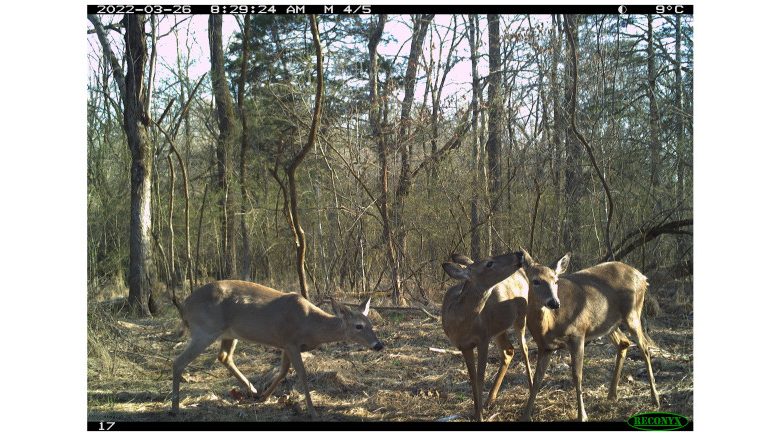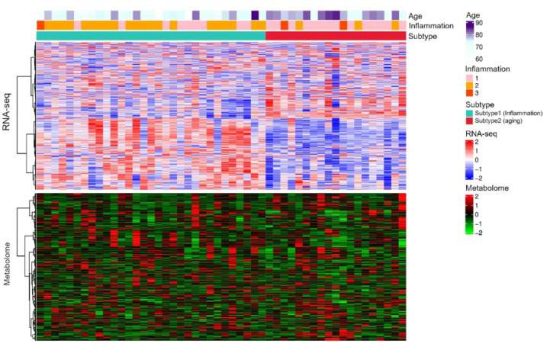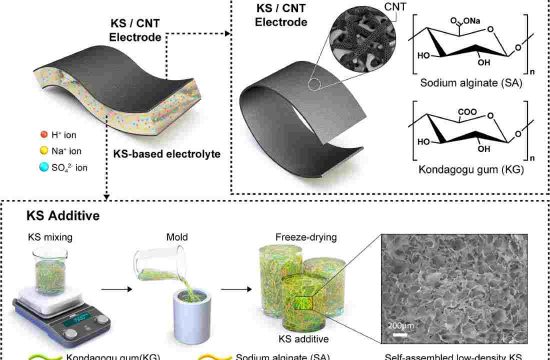Madison — A new study from researchers at the University of Wisconsin–Madison finds that ticks can harbor transmissible amounts of the protein particle that causes Chronic Wasting Disease (CWD), implicating the parasites as possible agents in the disease’s spread between deer in Wisconsin.
CWD is caused by a pathogenic agent called a prion, which can pass from deer to deer through contact with things like prion-contaminated soil and infected bodily fluids such as urine, saliva, blood, and feces. Prions, which cause disease in animals and in humans, prompt certain proteins to fold abnormally, particularly in the brain, and prevent these proteins from carrying out their normal functions. Over time, the CWD prion can cause severe brain damage and eventually death in deer.

A lot of CWD studies focus on the role soil plays in spreading fatal neurological diseases among deer. But Heather Inzalaco, a researcher in the Wisconsin Cooperative Wildlife Research Unit, housed in the UW–Madison Department of Forest and Wildlife Ecology, was curious about other potential environmental and behavioral means of transmission.
“Deer live these secret lives; we don’t see everything that they do,” Inzalaco says.
She started to consider what sort of things pester deer that could be connected to CWD: Ticks were the perfect parasitic potential culprit to investigate.
Ticks have a goal, of course, to feed on their host’s blood. Inzalaco began to wonder if ticks that acquire blood from CWD-infected deer could also host the prions and if so, could they contain enough prions to spread the disease.
The question became even more intriguing when she discovered that the most common non-aggressive social behavior that deer engage in is allogrooming.
“Deer will groom one another to get places that they can’t reach on their own through self-grooming,” Inzalaco says. “If they’re grooming each other and they’re doing that to remove ectoparasites [such as ticks], that might be problematic because they’re probably eating the ectoparasites.”
First, she needed to show that ticks can take up and harbor these prions when they feed on CWD-infected blood. She designed an experiment to do just that.
“You’d think that it’d be easy to get ticks to take a blood meal, but they are surprisingly fussy in the lab,” Inzalaco says.
She was able to determine that ticks can not only carry the prions in their blood meal, they can also carry enough of the agent to potentially infect another animal with CWD. After seeing that the phenomenon was possible in the lab, it was time to see what was happening in the wild.
Inzalaco partnered with the Department of Natural Resources to study ticks collected from deer that hunters harvested and submitted for CWD testing. Of the 176 deer with ticks she studied, 15 of the deer were also positive for CWD. Inzalaco took the ticks from the infected deer and tested the blood they contained to quantify the amount of prion the ticks harbored.
She determined that these engorged, wild ticks did carry transmissible levels of prions — just like those in the lab — making them potential mechanical vectors for the disease.
“They’re just like a little CWD tic-tac that are possibly being eaten by the deer,” Inzalaco says.
The study did not test whether prion-carrying ticks did cause transmission to other deer.
Understanding more about how CWD can spread can help improve the management of the disease. While it isn’t practical to treat all wild deer with tick preventatives, Inzalaco believes better land stewardship could help manage tick populations.
For instance, having contiguous habitats of native plant communities and properly managing areas to continue a natural fire regime has been shown to limit tick populations, she says, while more fragmented, unbalanced ecosystems riddled with invasive plants may allow ticks to proliferate more readily.
Inzalaco says it might be possible to use ticks as a way to screen for CWD in both wild and farmed deer. Current methods of diagnosis or screening involve invasive sample collection from animals or tissue sampling after their death. While testing the ticks from deer may not lead to the same level of accuracy as testing tissue samples, it could still be a useful tool to better understand where the disease is affecting the deer population in the state.
Inzalaco also believes her research can help improve the ecosystems that everyone relies on, especially the state’s hunters.
“We are all inextricably linked to ecosystem function and the biodiversity of those ecosystems,” she says. “That is really what drives my desire to learn and do good science on a daily basis. We need to make an effort to preserve our natural heritage so that we can continue living on this planet and not be overtaken by disease and have healthy animals and healthy functioning ecosystems.”








